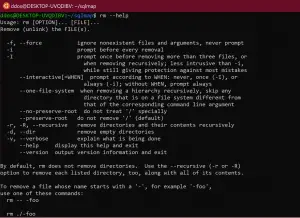
:max_bytes(150000):strip_icc()/009-move-files-with-linux-mv-command-2201103-76f02e704692419382101c6858ae2676.jpg)
:max_bytes(150000):strip_icc()/002_uses-of-linux-command-find-2201100-5bd8f0d64cedfd00264fc4e5.jpg)
Many files can be moved directly on GitHub, but some files, such as images, require that you move them from the command line. You can use the command line to move files within a repository by removing the file from the old location and then adding it in the new location. Moving a file to a new location using the command line # For more information, see " Creating a pull request." If your current branch is the default branch, you should choose to create a new branch for your commit and then create a pull request. For more information, see " Creating a commit with multiple authors."īelow the commit message fields, decide whether to add your commit to the current branch or to a new branch. You can attribute the commit to more than one author in the commit message. In the "Commit message" field, type a short, meaningful commit message that describes the change you made to the file. to jump up one full directory level, or type the backspace key to edit the parent folder's name. To move the file into a directory above the file's current location, place your cursor at the beginning of the filename field, then either type.

Your new folder name becomes a new item in the navigation breadcrumbs.

In the filename field, change the name of the file using these guidelines: In the upper right corner of the file view, click to open the file editor. In your repository, browse to the file you want to move. For more information, see " Committing and reviewing changes to your project in GitHub Desktop." You can use GitHub Desktop to move your changes to a new branch and commit them. For more information, see " About protected branches."


 0 kommentar(er)
0 kommentar(er)
